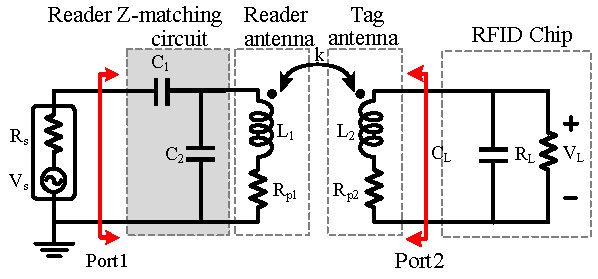Abstract

Commonly, near field RFID is used in situations where a tag is brought close to some device that is to read the identity of the tag thereby enabling some action: unlocking a door, reading payment information at a merchant’s register, or sharing social information between enabled devices. In all these cases, the ergonomics of the physical reading process can be hindered if read range requires a user to awkwardly maneuver the tag near the reader until a read is achieved. One way to facilitate an extended and reliable read range borrows on knowledge from the wireless power transfer community where it is known that increasing the Quality factor of the reader or tag coil will increase power transfer. However, RFID engineers have typically limited maximum coil Q factor to about 10–20 due to the need for maintaining a system bandwidth that is broad enough to support the necessary communication data rates. To meet this challenge, this paper introduces a method of impedance matching high Q reader coils to the source known as “over-coupling” the source to the system input. On one hand, the use of high Q coils extends the range where the tag receives sufficient power to turn on, while it is over-coupling that slightly damps the system resonance, producing an effective system Q factor that simultaneously supports a bandwidth wide enough to accommodate necessary data rates. This work will show both theoretically and through experimentation that using high Q coils in the over-coupled regime supports extension of read range in near field RFID systems by 81% or more compared to the next best impedance matching strategies.
Copyright Notice
The documents contained in these directories are included by the contributing authors as a means to ensure timely dissemination of scholarly and technical work on a non-commercial basis. Copyright and all rights therein are maintained by the authors or by other copyright holders, notwithstanding that they have offered their works here electronically. It is understood that all persons copying this information will adhere to the terms and constraints invoked by each author’s copyright. These works may not be reposted without the explicit permission of the copyright holder.